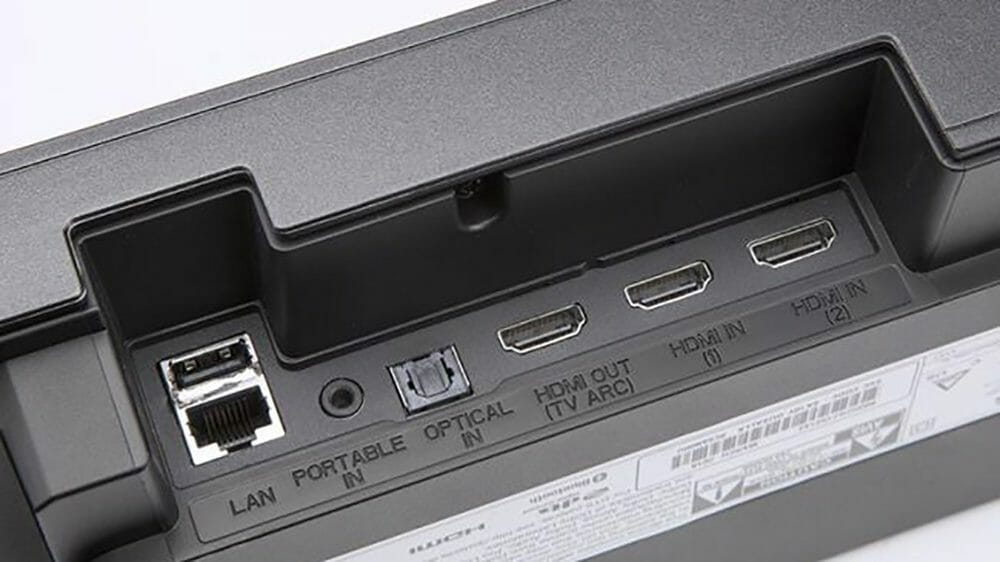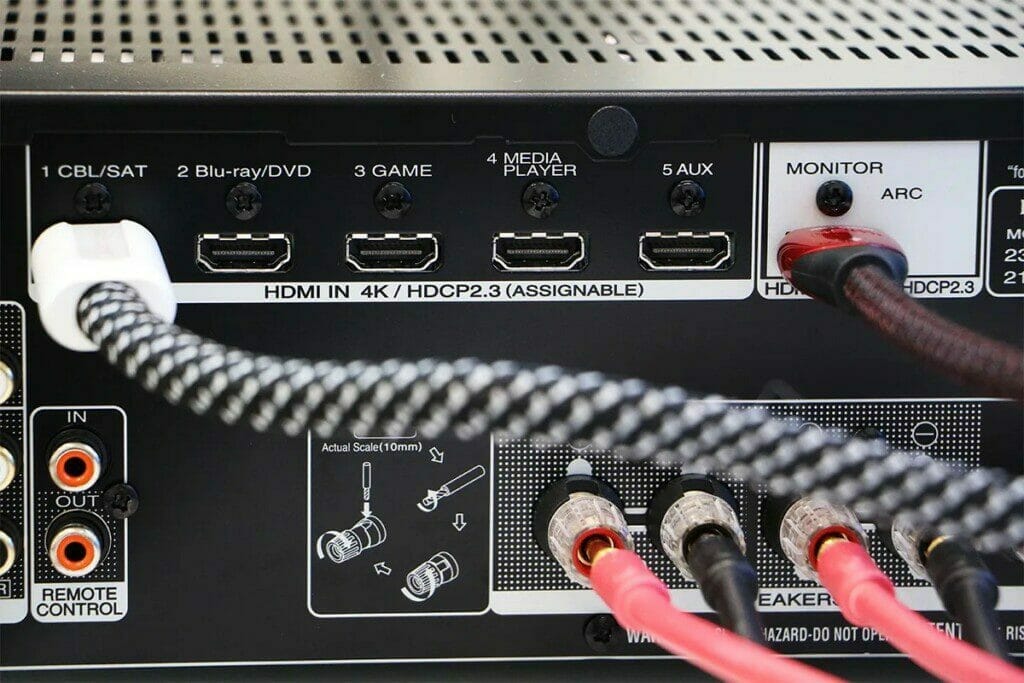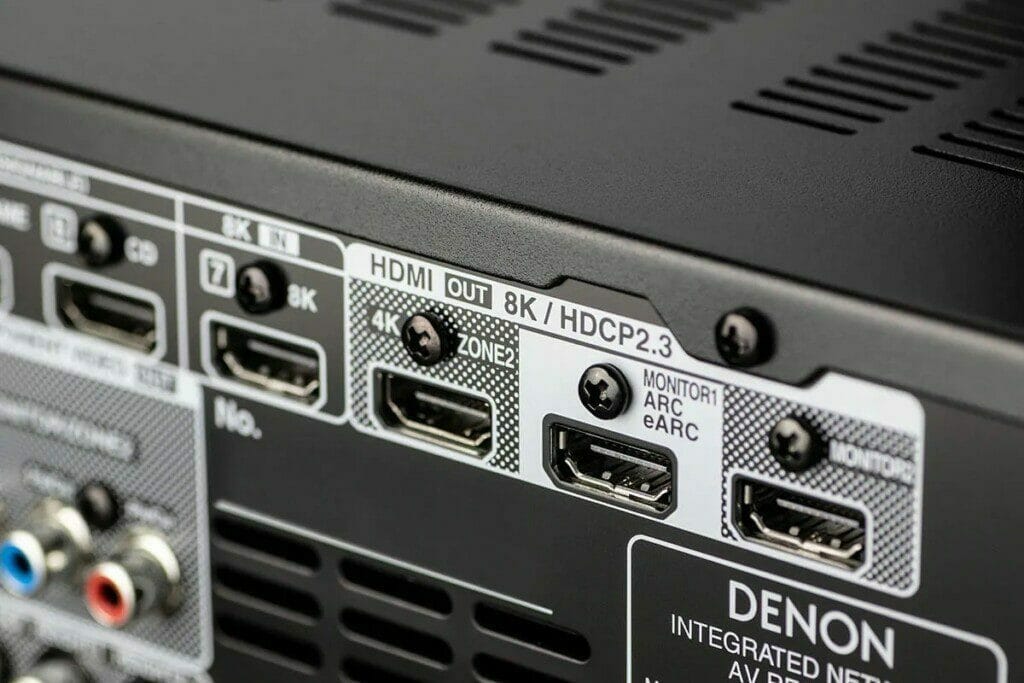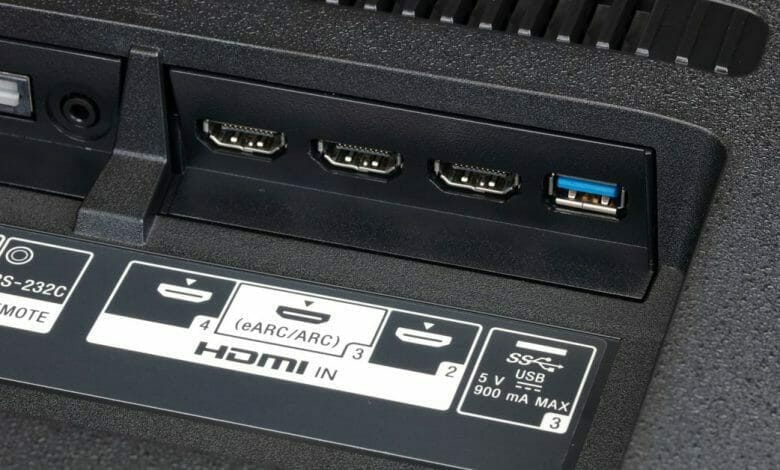So you just purchased a new big-screen for your living room during Black Friday and need to buy some accessories. One of the required accessories is probably some HDMI cable so you can interface with your Xbox, Playstation 5, Blu-Ray player, or other devices. But what are the HDMI eARC and HDMI ARC on my new Smart TV? And which should I use?
HDMI eARC (Enhanced Audio Return Channel) and ARC (Audio Return Channel) are both features of HDMI (High-Definition Multimedia Interface) technology that revolutionize audio connectivity across devices. These features allow for the transmission of audio signals between audio/video devices using a single HDMI cable, eliminating the need for separate audio cables and simplifying the overall setup.

What is HDMI ARC?
ARC, introduced with HDMI 1.4 in 2009, was a significant advancement in audio connectivity. Traditionally, audio signals from the TV were transmitted to external audio devices, such as AV receivers or soundbars, via a dedicated audio cable. However, ARC enabled audio to be sent from the TV back to the audio system through the HDMI cable used for video transmission.
The primary purpose of ARC is to deliver audio signals originating from the TV to external audio devices. This allows users to enjoy better audio quality from the TV’s built-in tuner, streaming apps, or connected devices by utilizing the superior audio capabilities of an external audio system.
HDMI ARC supports both uncompressed stereo and compressed surround sound formats like Dolby Digital and DTS, providing an enhanced audio experience without the need for additional cables.
While ARC was a significant advancement, it had some limitations. It supported compressed audio formats but lacked the capability to transmit high-quality, lossless audio formats like Dolby Atmos and DTS:X. Additionally, the bandwidth provided by ARC was limited, which constrained the transmission of higher-resolution audio.

Audio Formats Supported by ARC
- PCM (2 Channel)
- Dolby Digital (Up to 5.1 Channel)
- DTS Digital Surround (Up to 5.1 Channel)
- DTS is only available on models released before 2018
What is HDMI eARC?
To address these limitations, HDMI 2.1 introduced eARC (Enhanced Audio Return Channel) in 2017. eARC builds upon the foundation of ARC and offers significant improvements in audio transmission capabilities.
One of the primary advantages of eARC is its support for higher audio quality and more advanced audio formats. It can transmit lossless, uncompressed audio signals, allowing for a more immersive and high-fidelity audio experience.
This is particularly important for modern audio formats like Dolby Atmos and DTS:X, which rely on object-based audio technology to deliver three-dimensional sound. With eARC, these audio formats can be transmitted from the TV to an external audio device without any loss in quality.
Furthermore, eARC offers a significant increase in bandwidth compared to ARC. This higher bandwidth enables the transmission of higher-resolution audio, including formats like 24-bit/192kHz, providing improved audio fidelity and detail.
The increased bandwidth of eARC also ensures that there is no compromise in audio quality when utilizing features like HDMI 2.1’s Variable Refresh Rate (VRR) or Auto Low Latency Mode (ALLM) for gaming.
It’s important to note that eARC is backward compatible with ARC. This means that if a device supports eARC, it can still receive audio from a device with ARC. However, to utilize the advanced capabilities of eARC, both the TV and the audio device need to support the eARC feature.

Comparison of ARC and eARC
| Function | HDMI ARC | HDMI eARC |
|---|---|---|
| Compressed 5.1 | Yes | Yes |
| Uncompressed 5.1 | No | Yes |
| Uncompressed 7.1 | No | Yes |
| High Bitrate and object-based up to 192kHz, 23-bit(e.g. Dolby Atmos, DTS:X) | No | Yes |
Final Thoughts
Overall, HDMI eARC and ARC are game-changers in audio connectivity for your devices. They simplify audio setups by eliminating the need for dedicated audio cables and allow for the transmission of audio signals through the HDMI cable.
While ARC brought significant improvements over traditional audio connectivity, eARC takes it even further with support for lossless, high-resolution audio formats and increased bandwidth. As audio technologies continue to advance, eARC provides a future-proof solution for enjoying immersive and high-quality audio in your entertainment systems.
Our Pick











